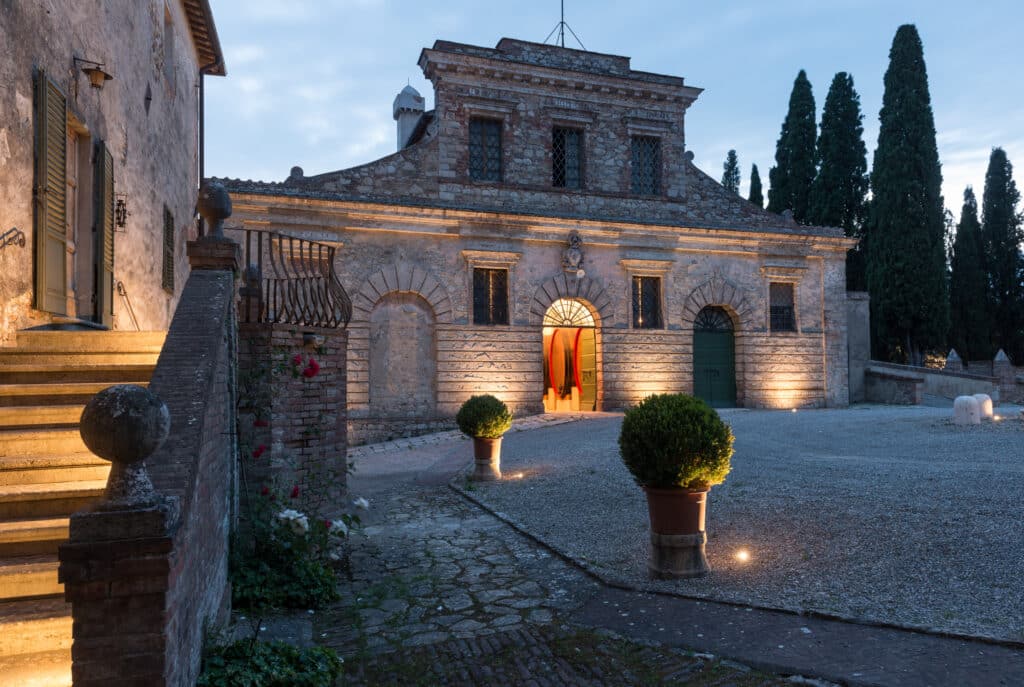About Fèlsina
The landscape is one of far-reaching hills overlooking the town of Castelnuovo Berardenga. A land bathed in light, where at an exceptional moment in Italy’s history, even if only for a brief moment, the dream of an ideal city took on concrete form: Siena. And it is precisely here, in this nonpareil land, that the grape varieties of Fèlsina express the uniqueness of their terroir, fruit of an unparalleled union between earth and grape, attention and cultivation, seasons and climate, culture and hard manual labor, of instinct and intelligence, land and vegetation, oenological science and the acquired wisdom of the cellarmaster.
Rancia, Colonia, Arcidosso, Santa Maria, Ruzzatoio, Terrarossa: these are but some of the individual farms and locales that make up Fèlsina, each representing an individual terroir. Every type of cultivation at Fèlsina – vineyard, olive grove, grain field, garden, and wood – is characterized by the deepest reverence for terroir, which for us means succeeding, through hard work and cultivation practices, in transmitting the very soul of the landscape, the impression of its fragrances, of the sounds of Tuscany and Siena, and of this corner of Chianti, in such a way that its history and traditions take on new life.
Fèlsina is located in the commune of Castelnuovo Berardenga, in the province of Siena, on the southeast edge of the Chianti Classico zone, between the last spurs of the Chianti hills and the beginning of the Ombrone valley. Overall, Fèlsina comprises about 500 hectares, with a little more than 72 planted to vineyard, at elevations ranging from 350 to 420 meters. The heath clay of the Crete Senesi, which lie not far off in the direction of Montalcino, constitute a reminder that Fèlsina, which straddles the border of the Chianti Classico denomination, represents a “border land,” from a geological perspective. Its terrains are in fact quite diverse. Some with essentially rocky-calcareous soils, and a preponderance of layered marl, are similar to a formation shared with other areas in Chianti. Others soils are characterized by layers of sandstone with silt and clay, along with mineral-rich marine sediments that guarantee good natural fertility. Strange as it may seem, the effects are unexpectedly uniform, yielding characteristics that are the unique hallmarks of all of Fèlsina’s wines, in particular its Sangiovese, which displays a penetrating bouquet with aromas of earth, tobacco leaf, and smoke, alongside notes of spice and black liquorice. From this common base, various distinctive qualities and nuances stand out, their number actually quite large, thanks to this growing area’s uncommon traits and variations.
Fèlsina boasts a variety of climates, landscapes, and terrains, with its various vineyards characterized by diverse soils and microclimates, each unique in its individual qualities. Fèlsina’s Sangiovese – or Sangioveto, the original Tuscan word – takes its birth from this extraordinary variety, a combination of variables – different soils and clones – that constitutes a distinctive heritage to hand down to future generations. For this reason, starting in 1983, the winery initiated a program of massale selections that has allowed it to preserve an important patrimony of different Sangioveses cultivated here through lengthy efforts and much research. That marriage of grape variety and terroir is an inseparable element of both the past and future of Fèlsina.
A further important factor is that since 1993 Giovanni Poggiali has been replacing vineyards and planting new ones, deepening Fèlsina’s research into Sangiovese, as a consequence of an increased awareness by the family and its colleagues that terroir is, of course, conditioned by geology, but is even more profoundly a social construct. In this sense, the preservation and further development of Sangiovese is the leitmotif of a commitment that illuminates the concept of tradition. The oldest farmers on this land were able to give new expression to age-old practices and experiences, marrying them to modern viticulture, and then authoritatively transmitting this priceless ensemble to the younger generations. In this cultural-agricultural context, various Sangiovese sub-varieties have emerged. This rich biodiversity, varying in cluster shapes, resistance to severe weather conditions, skin concentration, and external beauty, is what has justified Fèlsina’s decision to produce monovarietal Sangioveses, a decision motivated not only by philosophy but by the accumulated humus of experience.



We have never betrayed the land and, speaking of Sangiovese, the authentic spirit of the vine.